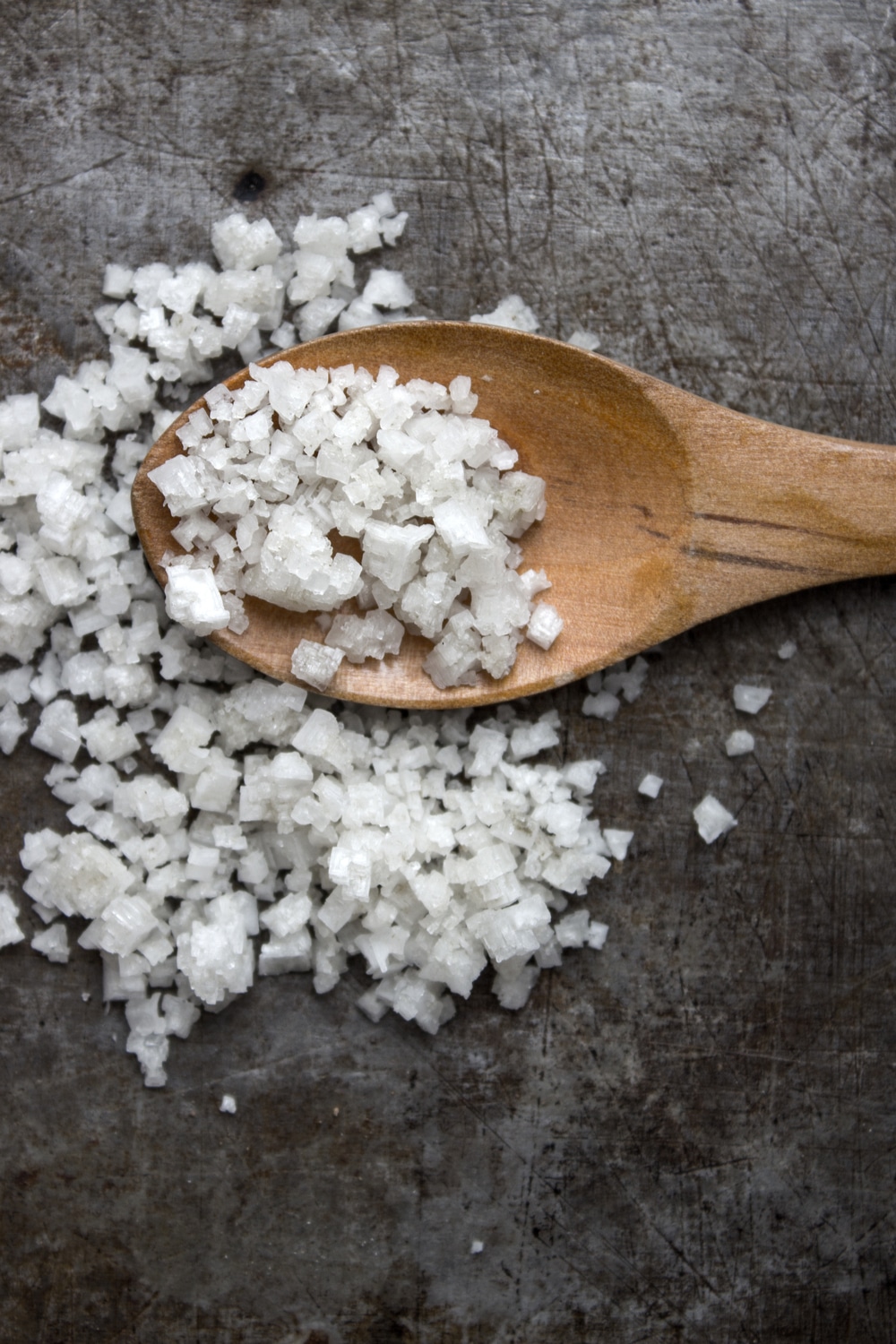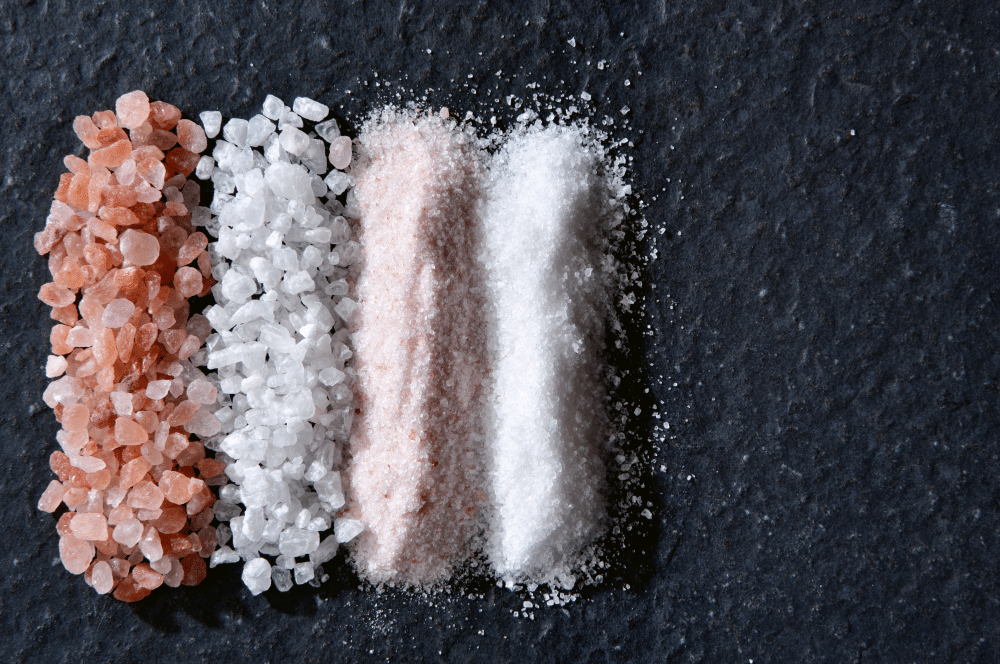Learn the difference and experience the difference. It’s well worth it.
My spice cabinet is so full, it makes me crazy. I can never find what I need. So I decide to pull everything out and go through the jars, one by one, hoping to eliminate some. Whatever I haven’t used in the past 6 months needs to go, I decide. It’s a bit like cleaning my closet, but here I also check expiration dates. And I don’t try anything on for size, minor bonus.
I realize that some spices I really never use (like coriander) and some have totally lost their flavor (like the ground cloves). I keep track of what I need to restock as I clean.
Really, my most valuable spices are my salts. That is really all one needs, for flavor.
Why salts, in plural? That’s because I have 5 types in my cabinet, always.
Here, let me tell you a bit more about my salt collection, what kind of salt should you use and why I think you all need to take a better look into how you sprinkle.
- KOSHER SALT

I keep my kosher salt in a salt cellar (see this post by Victoria Dwek), it’s the easiest way for measuring and sprinkling. I love that feeling of the granules falling off my fingers.
2) TABLE SALT
 Basically the stuff you put into the saltshaker. Nothing more. It pours out easily and neatly. The one quality that table salt has over kosher salt is that it dissolves better. If, for example, you need to brine a chicken and you want it to dissolve completely, I recommend you use this.
Basically the stuff you put into the saltshaker. Nothing more. It pours out easily and neatly. The one quality that table salt has over kosher salt is that it dissolves better. If, for example, you need to brine a chicken and you want it to dissolve completely, I recommend you use this.
3) PINK HIMALAYAN SALT
 My new favorite. There is an ongoing debate whether it is truly healthier than other salts, but, honestly, I don’t really care. I find it really flavorful for seasoning meats and fish. (I will not use it for potato kugel, soups, challos, etc. ) It can be found in virtually all groceries nowadays.
My new favorite. There is an ongoing debate whether it is truly healthier than other salts, but, honestly, I don’t really care. I find it really flavorful for seasoning meats and fish. (I will not use it for potato kugel, soups, challos, etc. ) It can be found in virtually all groceries nowadays.
4) MALDON SEA SALT FLAKES (see link here)
No, the typical household will probably not stock on Maldon, but, really, it should. Maldon Salt adds that perfect touch to any dish that gets a sprinkle of salt right before serving and not during cooking, hence the name “finishing salt.” Think edamame, bruschetta or salads. Maldon has a slightly chewy texture that is delicious and addictive. Worth the splurge. Also, it is so pretty. I use it on my homemade caramels as well.
5) SEA SALT CRYSTALS
This is probably the one that I use least, for cooking that is. It’s my go-to for food styling because of its large, visible crystals. I sometimes sprinkle it on a tomato salad, or chocolate chip cookies, right before baking them, for that extra pizzaz. I find them prettier than useful.
Alright, time to get back to my cabinet, time to clean this up!




I feel so gourmet knowing I have the same salta as you lol
Lol this made me smile 🙂
Pink Himalayan salt is actually very good in challah. It doesn’t affect the taste but it causes some sort of reaction with the yeast and it gives the challah an amazing fluffiness. I just heard that trick and was skeptical but it’s really true!
Thank you Chaya! I must try it in my next batch!
Love this post! I’m gonna try the Himalayan pink salt too for challah, gonna be lots of turning that grinder, my recipe class for 1/4 cup salt! Thanks so much! Love learning new tips…
To give credit where credit is due: I heard that tip from Danielle Renov
FYI Costco sells big plastic container of pink salt where you can measure out.
the pink salt at costco says nothing about being himalayan salt, they used to sell a container that said himalayan salt, but changed it to pink salt that just doesnt look the same. have stopped buying it from them since
I’ve yet to find kosher salt in Israel. What would you recommend I substitute it with?
It’s callee Melach Yam Gas or something like that. It comes in a bigger container than average and it has a picture of a man holding a basket.
Am I the only one who finds that when I use kosher salt in baking there are some salty spots? It doesn’t dissolve properly and then I taste the salt randomly…